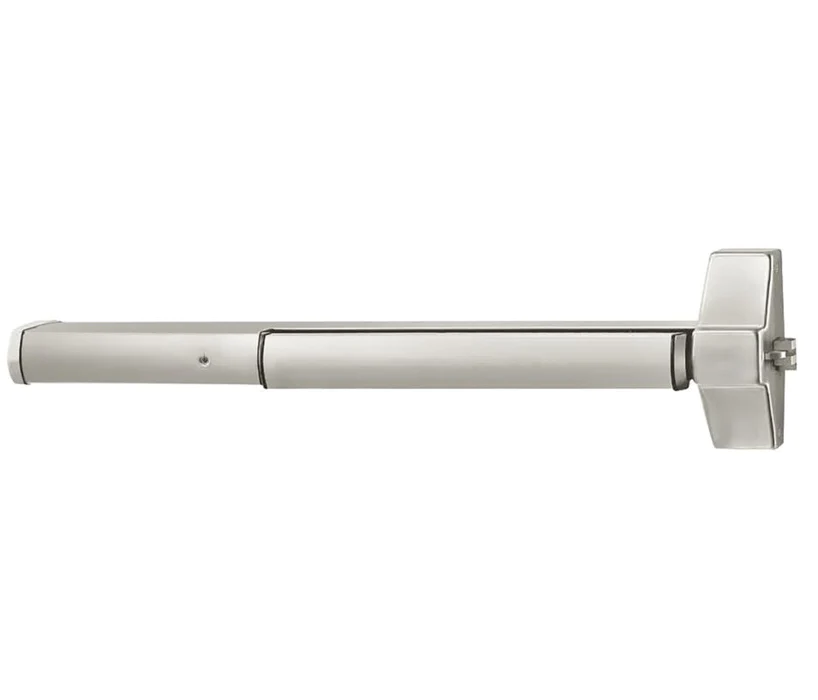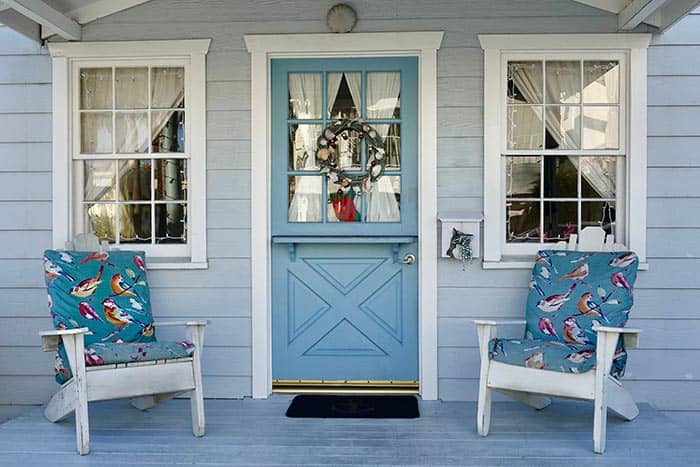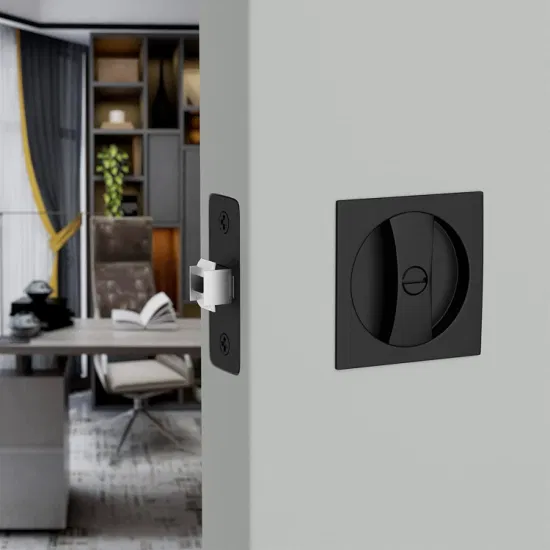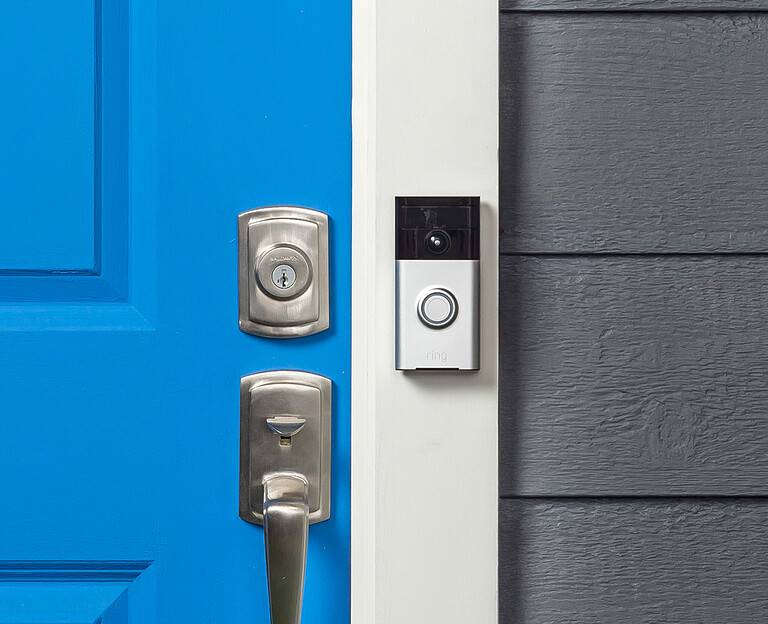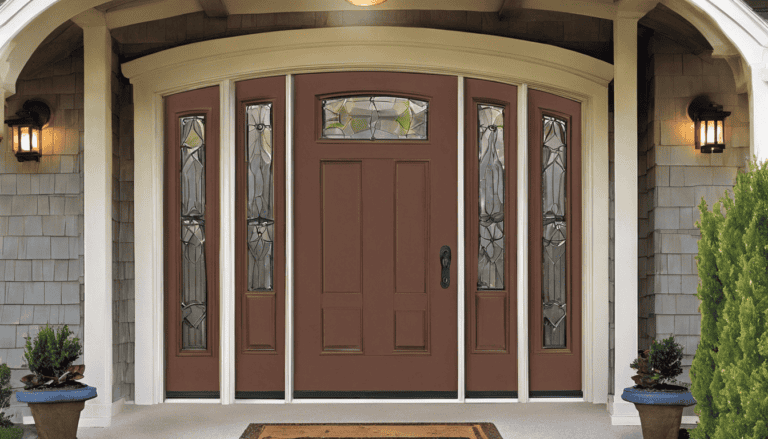Panic Bars
In the intricate realm of building safety and security, panic bars stand out as a vital element, intricately woven into the fabric of emergency preparedness. Found on the doors of countless public and commercial spaces, these unassuming devices play a crucial role in facilitating swift and orderly evacuation during moments of crisis. With a simple push, panic bars offer occupants a clear path to safety, embodying reassurance in the face of uncertainty.
In this blog post, we delve into the significance of panic bars (also referred to as exit devices), examining their functionality, historical context, and the indispensable role they serve in safeguarding lives during emergencies.
As we navigate the labyrinth of building safety, it becomes evident that panic bars are more than just mechanical devices; they represent a commitment to protecting lives. Their presence signifies a dedication to ensuring that in the event of an emergency, swift and efficient evacuation is possible for all occupants, regardless of physical ability or familiarity with the building layout.
In the following sections of this blog series, we’ll delve deeper into the mechanics of panic bars, exploring the various types available and the factors to consider when selecting and installing them. We’ll also examine best practices for maintaining and testing panic bar systems to ensure they remain in optimal working condition, ready to spring into action at a moment’s notice.
The Evolution of Panic Bars
Unfortunately, panic bars were born from tragedy – the Iroquois Theatre fire in Chicago back in 1903. Over 600 people lost their lives because they couldn’t get out; doors were locked or opened inward, hindering escape.
This catastrophe sparked a need for safer exit options. Enter Carl Prinzler and Henry DuPont who took this challenge head-on. They designed what we now know as panic bars – devices allowing easy exit with a simple push on a bar mounted at waist height across the width of the door.
Innovation Through Time
Over time, these safety mechanisms evolved beyond just facilitating quick exits during fires or emergencies.
Newer models come equipped with alarms discouraging unauthorized use while still providing safe egress when needed – talk about marrying security and safety. More modern iterations even integrate access control systems such as keycard readers and biometrics into their design.
Making Their Mark Worldwide
The global adoption of panic bars was driven by building codes requiring them for public buildings like schools or theatres — basically anywhere where large crowds gather. International Building Code (IBC), enforced worldwide ensures these regulations are adhered to.
Not only do they help with rapid evacuation during emergencies, but they also prevent scenarios like the Iroquois Theatre fire from happening again. This is why you’ll find panic bars in commercial buildings all over the world today.
A Lifesaver
To wrap it up, these critical components of building safety that we sometimes overlook carry an intriguing past steeped in safety and progress. They’re not just chunks of metal on doors; they’ve evolved into lifesavers due to unfortunate circumstances.
Understanding the Different Types Panic Bars
The Standard: Rim
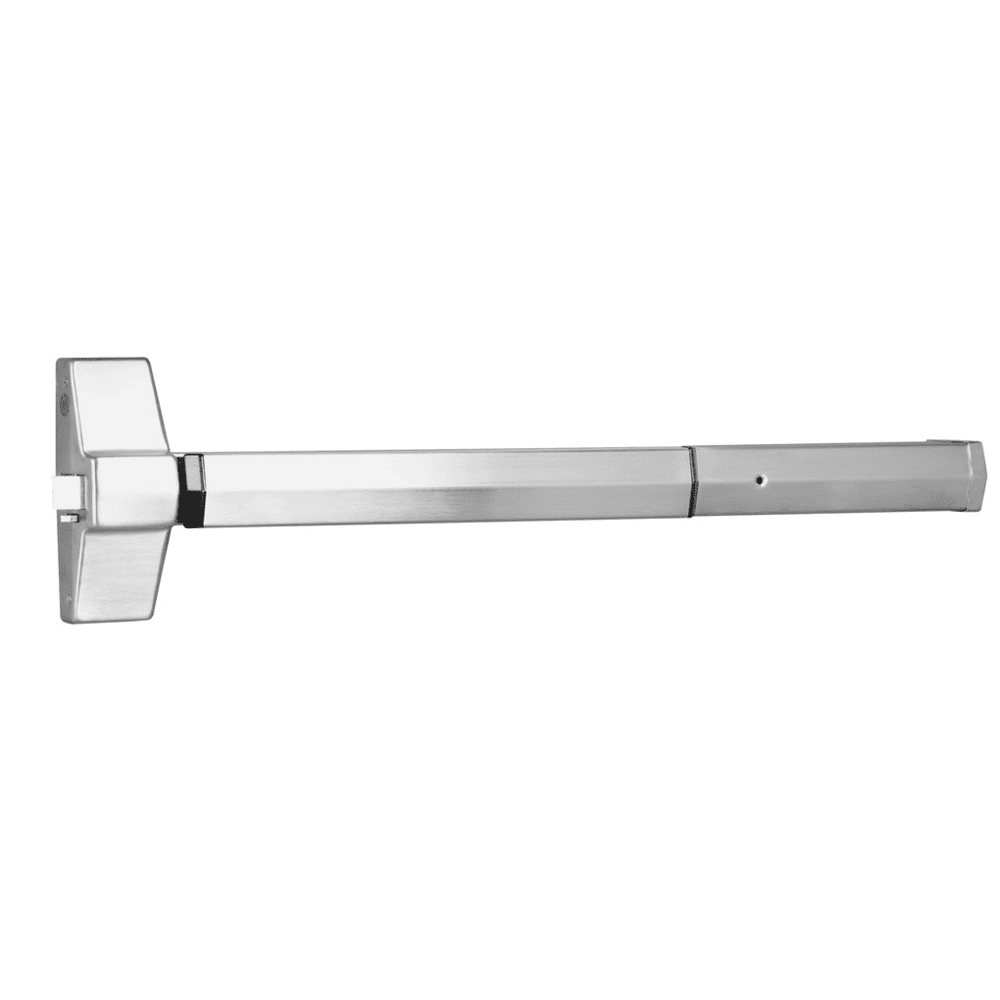
The rim panic bar is the most common type of exit device. One of the key advantages of rim panics lies in their versatility and ease of installation. Because they are surface-mounted, they can be retrofitted onto existing doors without the need for extensive modifications. This makes them a popular choice for retrofit projects aimed at enhancing the safety and compliance of older buildings with outdated exit systems.
Additionally, rim panic bars are available in a variety of configurations and finishes to suit different aesthetic preferences and architectural styles, ensuring seamless integration with the overall design scheme of a building. Whether installed on a storefront, office entrance, or educational facility, rim panic bars offer a reliable and intuitive solution for ensuring emergency egress is readily available when needed most.
Vertical Rod
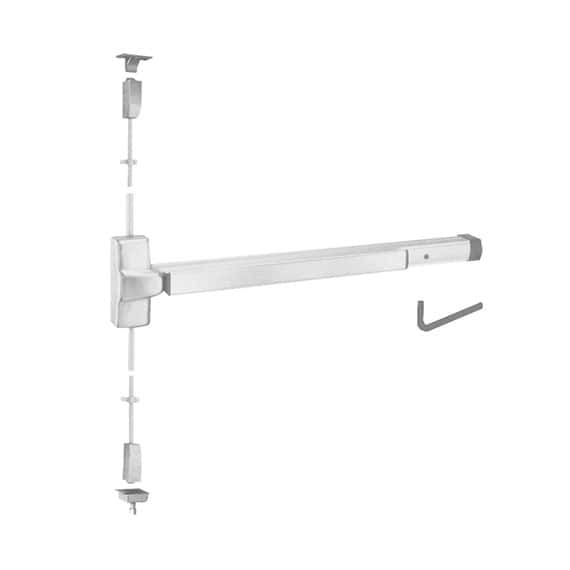
Available in both surface and concealed, vertical rod exit devices are typically used on pairs of door and are commonly found in commercial and public buildings. Vertical rod exit devices stand as a hallmark of safety and accessibility in commercial and public buildings. Characterized by their vertical rods extending from the top to the bottom of the door, these devices offer a robust solution for securing emergency exits while facilitating swift and orderly egress during crises.
One of the notable benefits of vertical rod exit devices is their versatility in application. Designed to accommodate various door widths and configurations, these devices can be installed on single or double doors, as well as doors with narrow stiles or glass inserts. This flexibility makes them suitable for a wide range of building types and occupancy loads, from office buildings and schools to retail stores and healthcare facilities.
Mortise
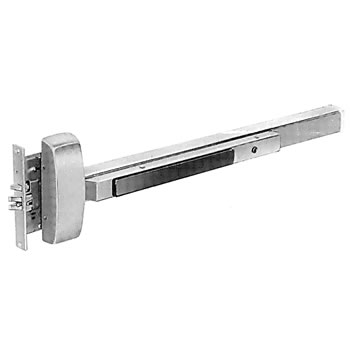
Mortise exit devices represent the most secure solution for securing emergency exits while maintaining the aesthetic integrity of a building’s doors. Unlike surface-mounted devices, mortise exit devices locking mechanism is installed within the door itself, offering a streamlined and discreet appearance. Despite their more inconspicuous presence at the strike, mortise exit devices are engineered to deliver reliable performance and uncompromising security.
With features such as heavy-duty mortise locks, smooth operating mechanisms, and durable construction, these devices ensure that occupants can evacuate swiftly and safely during emergencies. Whether installed in a historic landmark or a modern office complex, mortise exit devices exemplify the fusion of form and function, demonstrating that safety and style can coexist harmoniously in the built environment.
The Importance of Panic Bars in Commercial Buildings
Panic bars have a long-standing reputation for enhancing safety in commercial buildings. These devices, which allow doors to be opened by applying pressure from the inside, play a crucial role during emergencies.
Safety First: The Primary Role of Panic Bars
Commercial buildings often host large numbers of people at once. In a crisis, such as a fire or earthquake, panic can lead to chaotic evacuations that could be more damaging than beneficial. This is where panic bars come into play.
Panic bars are designed to let anyone open an exit door with minimal effort, even under intense stress or when facing physical barriers such as smoke obscuring vision or debris on the ground.
This quick and easy escape mechanism drastically reduces evacuation times and helps prevent injuries caused by bottlenecks at exits – truly a lifesaver in dire situations.
Legal Requirements: Ensuring Compliance With Safety Regulations
In addition to their obvious benefits for building occupants’ safety, installing panic bars also keeps businesses compliant with various regulations.
OSHA’s standards (29 CFR 1910 Subpart E), for instance, specify that every exit route must be free of obstructions and allow self-evacuation without keys or tools.
Beyond OSHA’s mandates though lies IBC Code Section 1008.1.9.10 which also requires panic bars in certain commercial spaces.
The Bottom Line: Panic Bars Are Good for Business
Panic bars are more than just safety devices; they’re good business investments too. They not only help avoid hefty fines and legal complications, but can also lower insurance premiums due to the increased safety measures in place.
Furthermore, having a well-planned emergency exit strategy – with panic bars as key components – boosts employees’ confidence and productivity by ensuring their workplace is safe.
Maintaining Accessibility: An Often Overlooked Benefit of Panic Bars
A lesser-known advantage of panic bars is that they improve accessibility within buildings. This feature may be particularly beneficial for people with disabilities or those who have difficulty operating traditional door handles.
Fire Doors and Panic Bars – A Vital Combination
The interplay between fire doors and panic bars isn’t just a smart setup—it’s a lifesaver. When fires strike, seconds matter. It is extremely important to know that panic bars are available in both standard non-fire rated and fire rated. The primary differentiator is typically the latching mechanism and strike the manufacturer uses to test the hardware to pass required fire testing.
Fire Exit Hardware: The Unsung Heroes in Emergencies
In the commercial space, panic bars installed on fire rated doors are referred to as fire rated exit devices or fire exit hardware. This is to eliminate the use of standard, non-fire rated panic bars being installed on doors that are required to be fire rated.
Exit devices are designed for quick exit during emergencies—no twisting doorknobs or fumbling with locks needed.
Pressing against these devices instantly unlatches the door allowing for swift evacuation—an invention that has saved countless lives since its inception after the tragic Iroquois Theatre Fire of 1903.
A Perfect Pair: Fire Doors & Panic Bars
Fire doors, which block smoke and slow down flames, have one critical flaw—they’re often heavy to maintain their resistant properties.
But paired with fire rated exit devices? They offer an efficient escape route without compromising safety standards—a perfect combination.
Beyond Fires: More Reasons Why This Combo Works
- Exit devices make opening heavy fire doors easier—a boon especially for children or those with limited strength.
- In situations other than fires like power outages or earthquakes, this combo ensures safe egress paths remain accessible at all times.
- Making sure buildings comply with fire and safety regulations is a must. Having exit devices on fire doors often meets these codes.
The Big Picture: Panic Bars & Building Safety
Exit devices on fire doors are just one piece of the puzzle when it comes to building safety, but they play an indispensable role in creating safer spaces for all occupants. So next time you push that bar and swing open a door—remember—you’re engaging with a device that’s there not only for convenience, but potentially your life too.
When Are Panic Bars Required Based on Occupancy?
The requirements for panic bars can be a little tricky to navigate, especially when you consider occupancy levels. You might wonder why the number of people in a building would affect door hardware choices. But here’s the deal – safety regulations get tighter as more people fill up spaces.
Panic bars, also known as crash bars or push bars, are usually needed in buildings with an occupant load of 50 or more according to NFPA 101: Life Safety Code. This code is pretty much the rulebook that architects and builders follow for ensuring public safety.
Differentiating Occupancies
All commercial establishments aren’t created equal – they’re categorized into different types based on their function and use. For instance, educational facilities have distinct rules compared to healthcare settings or retail stores.
In places like schools where quick evacuation may be crucial during emergencies, panic bars become mandatory regardless of occupant numbers (International Building Code). The logic behind this is simple yet profound – we prioritize our children’s safety above all else.
Rethinking Regulations: High Hazard Contents
Beyond just counting heads, another factor nudges us towards using panic bars – high hazard contents. These include substances which could potentially ignite or explode under certain conditions (think laboratories.). The idea here is to ensure people can escape swiftly if things go south.
Places housing such materials need exit devices, regardless of the number of occupants. This rule makes perfect sense because in case of an emergency, every second counts for those inside.
Installation and Maintenance of Panic Bars
Panic bars are vital safety features in commercial buildings. Installing and maintaining panic bars can be a challenge for those unfamiliar with the process.
The Installation Process
To start off, you need to choose the right panic bar for your door. The selection should take into account factors like door type, size, usage frequency, and local building codes.
Next up is the actual installation, which typically involves mounting the panic bar on the inside of an outward swinging door. For precise instructions, though, it’s best to follow manufacturer guidelines.
Maintenance Needs
Maintaining panic bars is equally important as installing them correctly because these devices are meant to save lives during emergencies. Regular inspections will help spot issues before they turn into bigger problems.
- Cleaning: Clean dirt and grime off regularly so that it doesn’t hamper functionality.
- Lubrication: Moving parts require regular lubrication for smooth operation.
- Damaged Parts Replacement: If any part gets damaged over time due to its constant use or mishandling, replace it immediately.
Hiring Professionals Vs DIY
While DIY installation and maintenance might seem cost-effective, hiring professionals has its benefits. They bring experience to the table, which ensures proper installation, compliance with local codes, and timely detection of issues during regular maintenance checks.
Panic Bar Regulations
There are specific regulations around exit devices. From their installation to maintenance, every aspect needs strict adherence to ensure safety and compliance with the law.
FAQs in Relation to Panic Bars
What is the purpose of a panic bar?
Panic bars let people exit quickly during emergencies. They unlatch doors when pushed, making them ideal for crowded places like commercial buildings.
Why is it called a panic bar?
The term “panic bar” comes from its design and use. It’s used to open doors fast in panicky situations, hence the name.
What is the difference between a panic bar and a push bar?
A push bar simply opens a door. But, unlike push bars, panic bars also unlatch doors during emergency exits.
What is another name for a panic bar?
You might hear folks call it an “exit device”, or even “crash-bar”. These names all refer to what we know as the ‘panic’ version of this safety tool.
Conclusion
Panic bars – simple, effective and often overlooked.
From their humble beginnings to their essential role in our safety, they’ve come a long way. Recall how we delved into the details of these life-saving gadgets?
We’ve explored why commercial buildings rely heavily on them. We discussed that indispensable combo: fire doors and panic bars. Don’t forget about occupancy rules too!
If you’re thinking about installing or maintaining one, remember those practical tips we shared.
In essence, panic bars are more than just door fixtures; they’re symbols of security and lifesavers in disguise.
